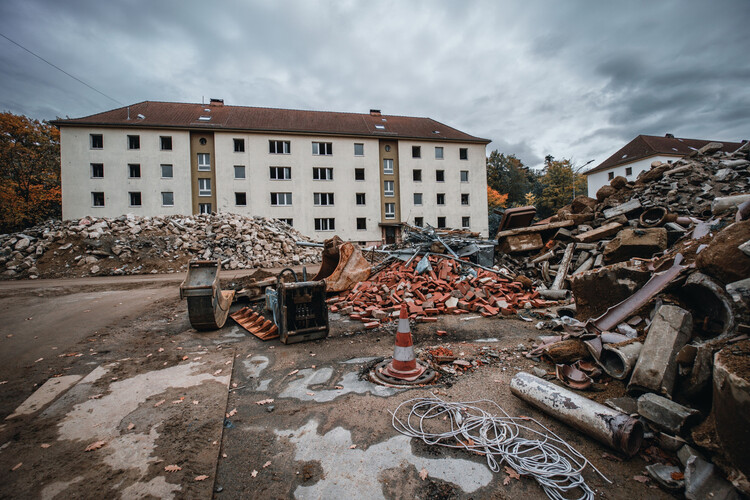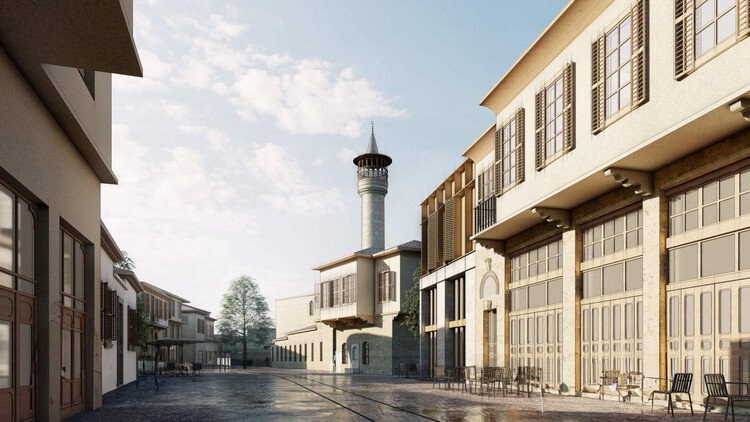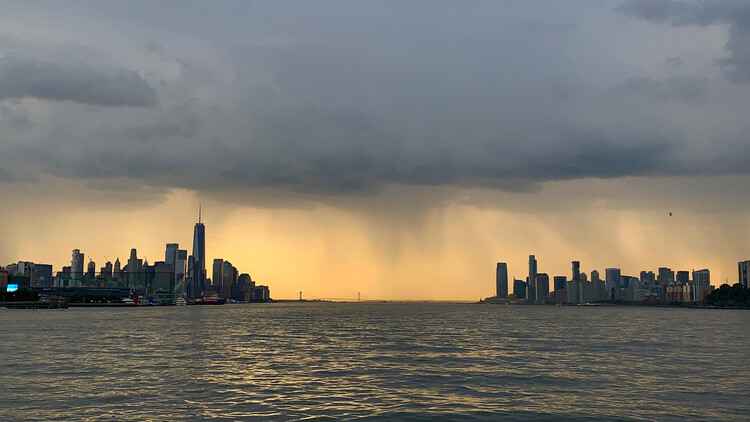
As we reflect on the tumultuous events of 2023, it becomes evident that the challenges posed by changing environmental conditions have left an indelible mark on communities worldwide. In response, architects and urban planners have set out, searching for the ways in which their actions can help create safer environments for communities worldwide, responding with both fast-to-deploy emergency architectures and long-term strategies to build resilience and mitigate risks.
Beyond merely responding to events like the devastating earthquakes in Turkey, Syria, and Morocco, or the widespread flooding in Libya or Pakistan, professionals are attempting to take proactive approaches, developing strategies that extend from predictive modeling to the application of re-naturalizing techniques or the ongoing research into the physics of safer and resilient structures.
Read on to discover the extent of the challenges posed by changing environmental conditions and the ways architects and urban planners have responded throughout the last year.
Related Article
Best Articles of 2023: Dismantling Ideas, Personal Narratives and the Emergence of New RealitiesAssessing the Damage
The year 2023 has been marked by a number of disasters, from devastating earthquakes in Turkey, Syria, and Morocco, to severe weather leading to dam failures and flooding in Libya and wildfires reaching urban areas in Hawaii, all putting communities in danger. These occurrences have also damaged the built environment, sometimes leading to the destruction of thousands of years-old monuments. Besides the large-scale events, smaller occurrences, such as the drought in Italy, demonstrate that no community is exempt from the effects of climate change.
A Major Earthquake Hits Turkey and Syria, Destroying a 2,000-Year-Old Unesco World Heritage Site

Cities, Villages, and UNESCO Historical Landmarks in Morocco Are Severely Damaged by a Major Earthquake

Dam Failures Create Devastating Floods in the Port City of Derna, Libya

Venice Canals Run Dry as Italy Faces Another Drought Alert

Post-Disaster Architecture
The first role of post-disaster architecture is addressing the immediate need for shelter and infrastructure in the aftermath of natural disasters. Temporary housing solutions, like those developed by architects such as Shigeru Ban, employ local materials and simple yet clever designs to provide quick and efficient shelters for displaced populations. Post-disaster architecture plays a key role in long-term recovery and rebuilding efforts. Sustainable and resilient designs, such as those promoted by Yasmeen Lari in Pakistan, contribute to the reconstruction of communities, helping them withstand future disasters. This not only safeguards lives and property but also promotes the overall stability and sustainability of regions prone to natural hazards.
Shigeru Ban Unveils Updated Prototype for Temporary Housing in Response to the Turkey-Syria Earthquake

Yasmeen Lari Sets Out to Build One Million Flood-Resistant Homes in Pakistan by 2024

Foster + Partners and BIG Selected to Revitalize Türkiye’s Hatay Province After the Earthquake

Carlo Ratti Associati Designs Kinetic Solutions to Flooding, Transforming Turin's Waterfront in Italy

Venice Authorities Install Glass Barriers at St Mark’s Basilica to Prevent Flooding

MVRDV, Adrian Lahoud and HCH Develop Tools and Strategies to Show Adaptations to Climate-Induced Threats

Building Long-Term Resilience
Architecture and urban planning cannot prevent the occurrence of natural disasters, but they can contribute to the goal of minimizing their effects and helping to protect the communities. Several long-term strategies have proven efficient, from creating models like flood maps to assess and predict the potential damage, to employing re-naturalizing strategies such as the Sponge city concept, continuing the research into seismic-resistant structures or taking inspiration from nature through biomimetic resilient designs. The vast array of strategies and innovations in this field give hope for a more resilient and agile environments that can better withstand the increasing threat of natural phenomenons.
How Can Cities Create Resilience in the Face of Natural Disasters

The Role of Biomimicry in Disaster-Resilient Architecture

How Madagascar Is Confronting Climate Change

How NYC Plans to Deal With Rainstorms: Global Precedents

First-Ever Earthquake Simulation in a 10-Story Mass Timber Building

New Orleans’ Equity-Driven Reforestation Plan

The Floating Village of Ganvie: A Model for Socio-Ecological Urbanism

How Water Responds to Land Reclamation in Coastal Cities

This article is part of the ArchDaily Topics: Year in Review, presented by Randers Tegl.
"When creating unique architecture, visionary ideas aren’t always enough. A unique look demands character, courage, and distinctive materials. And a format to achieve the extraordinary. At Randers Tegl, we aim to add a unique touch to exceptional brickworks by bringing premium bricks to life and into the world of architecture. Making the impossible possible. We are proud to be a part of unique architecture worldwide since 1911."
Every month we explore a topic in-depth through articles, interviews, news, and architecture projects. We invite you to learn more about our ArchDaily Topics. And, as always, at ArchDaily we welcome the contributions of our readers; if you want to submit an article or project, contact us.


























